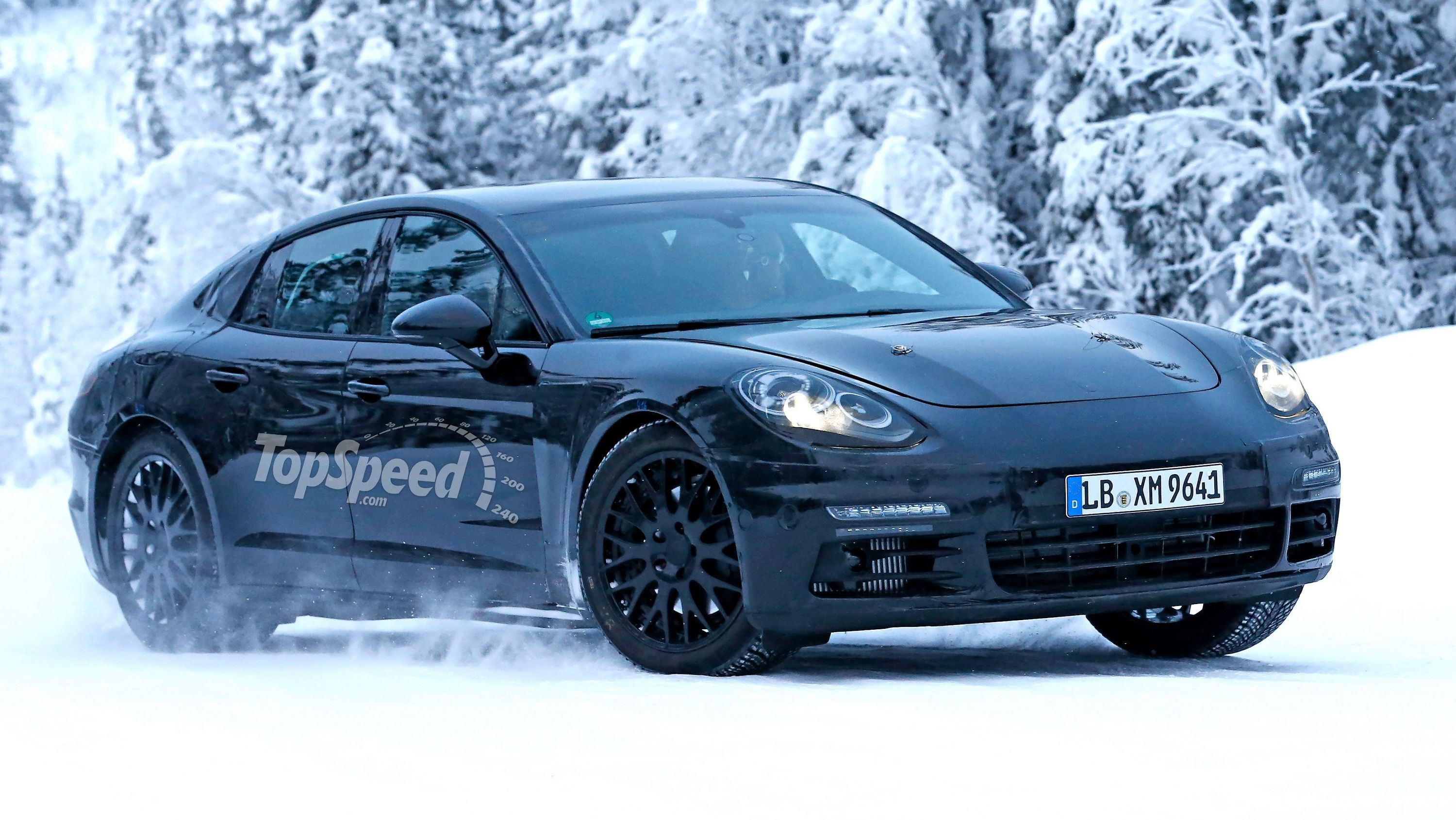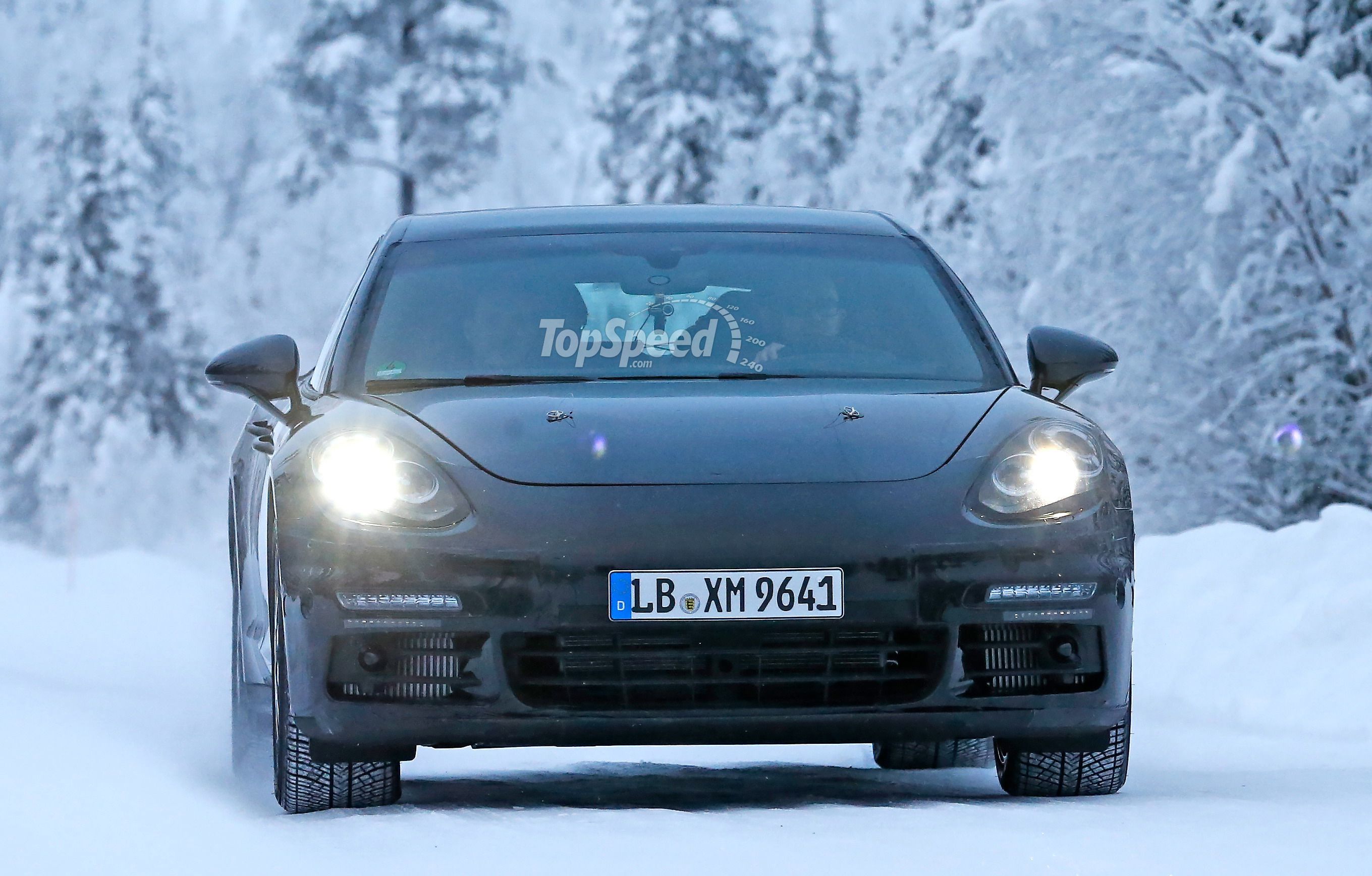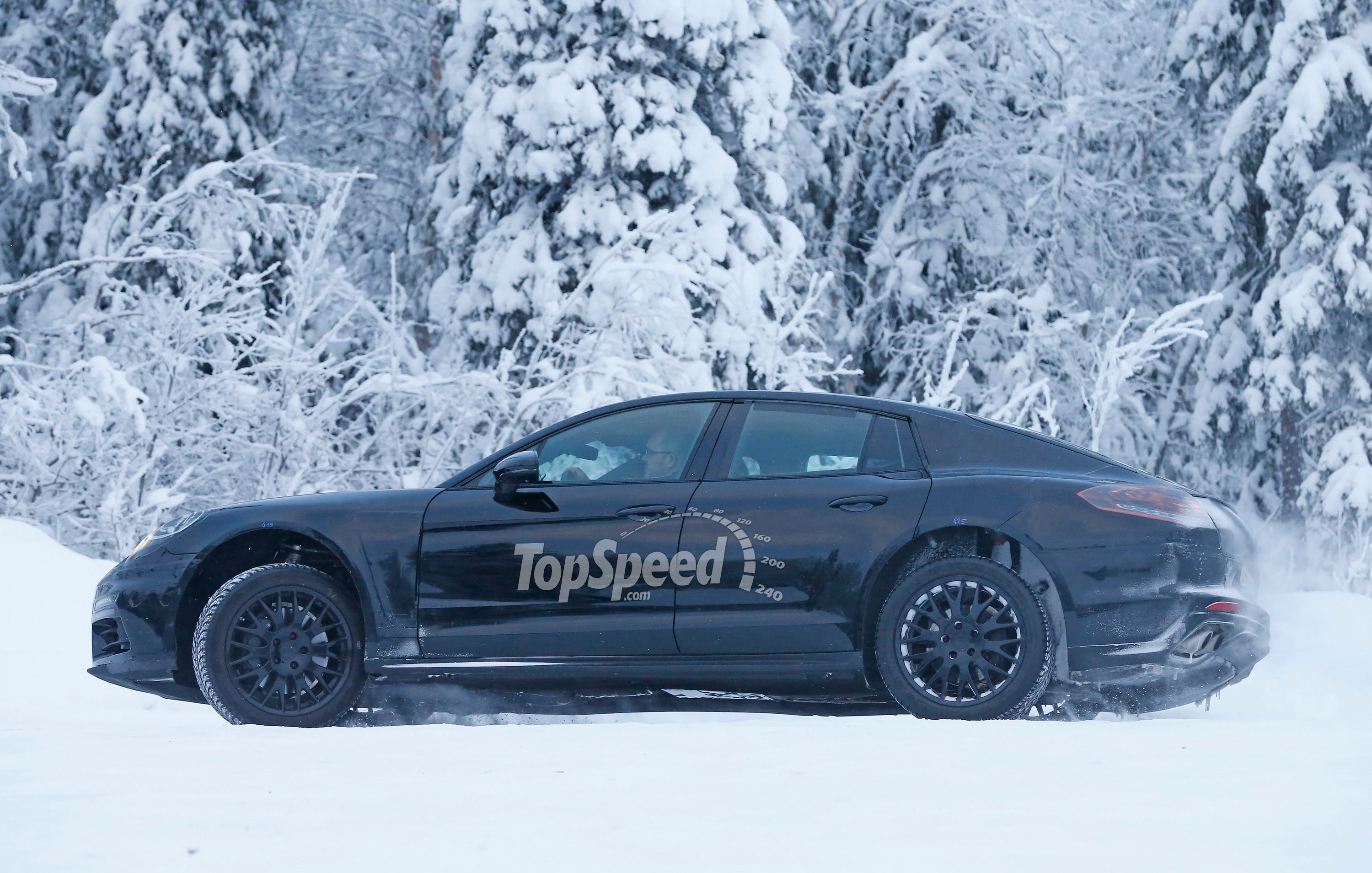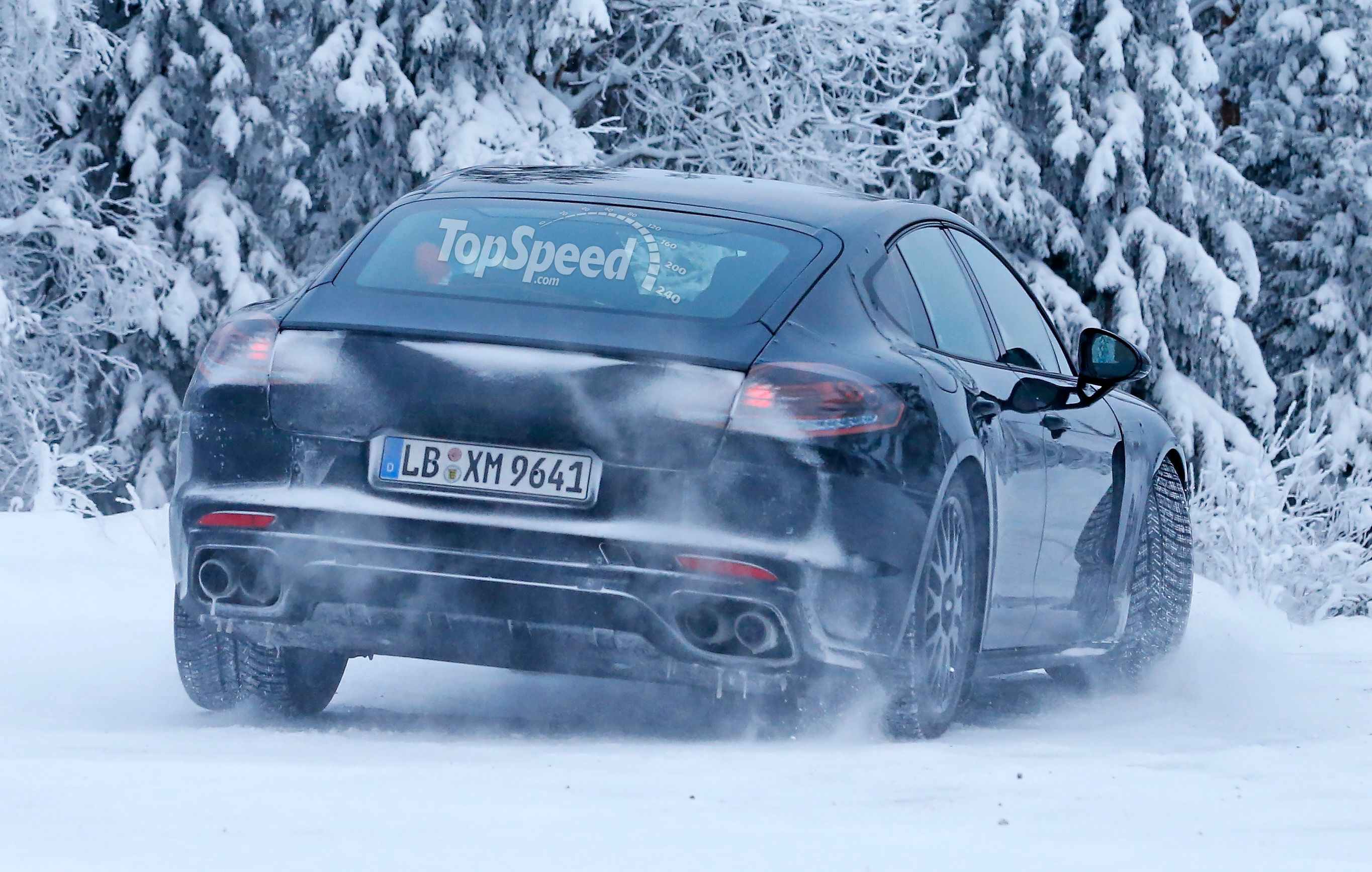With winter having taken over northern Europe for a few months now, several manufacturers have already traveled to freezing Sweden for cold weather testing. It turns out Porsche->ke1 is one of them, as the German automaker shipped the upcoming 2018 Panamera to Scandinavia for some proper snow flogging. The new sports sedan comes to replace the first-gen Panamera,->ke1840 a four-door that's seven years old. Porsche has been working on it for more than two years now, with the first prototypes showing up on public roads in early 2014. The second-gen Panamera, which is set to arrive for the 2016 model year, is in for significant changes inside and out, as well as under the hood.
Some alteration have been kept well hidden under the mule's heavy camouflage, but this new test car tells another story as it's being pushed to the limit through Sweden's wintery landscape. Various body parts are now visible for the first time, revealing intriguing details never before seen on the Panamera. Keep reading to find out what this test car has to say about the upcoming second-generation sedan.->ke142
Click past the jump to read more about the next generation Porsche Panamera.
2018 Porsche Panamera - Spy Shots
I'm no Panamera fan, but I must confess the redesigned sedan looks both sportier and more elegant when compared to its predecessor. A closer look reveals beefier wheel arches, which enhance the car's sporty appearance, as well as slightly longer rear doors, a sign that Porsche focused on making the Panamera more comfortable for rear-seat passengers. The Germans also went with a more subtle roof line by diminishing the sloping effect toward the rear. Additionally, the C-pillars have been reshaped and now include more conventional quarter glass.
The sedan's side mirrors have been replaced by sportier pieces, seemingly based on the 911 GT3's, as well. They are slightly larger than the GT3’s, but feature the same twin-strut configuration and pointy caps. It's the first time I’ve see these mirrors on the Panamera and I have a hunch Porsche is planning to added them to the final product too.
Underneath that sleek body lies Volkswagen Group's MSB platform, specifically designed for front-engine, rear-wheel-drive vehicles. The new platform enables Porsche engineers to make the new Panamera about 200 pounds lighter than its predecessor and I also expect it to deliver enhanced stability on twisty roads, especially when equipped with an all-wheel-drive system.
Under its long hood, the Panamera will sport an array of six-cylinder engines, as well as a newly developed, twin-turbo V-8 with significantly more power and improved fuel efficiency. Speaking of efficiency, an updated hybrid is underway as well. It remains to be seen whether the Panamera GTS will continue with a naturally aspirated mill or not.
The second-gen Panamera could also serve as a base for a shooting brake and two-door coupe versions, but Porsche has yet to confirm any of the two. I guess only time will tell if there's any grain of truth in these rumors.
Why it matters
I'm one of the many who were skeptical of the Panamera when Porsche first announced in back in 2008. As a Porsche purist, I was also rather upset as the company went on to approve its very first four-door, a project that's been lurking in the shadows since the late 1980s.
Fortunately, it didn't take long for Porsche to prove me that the Panamera is not that far off the 911 in terms of performance. It was then when I also realized the Panamera was more than just another way for Porsche to sell more cars. Stuttgart wanted a niche of its own, one that would blend the sportiness of the 911, the comfort of the Cayenne and the elegance of the sedan it never had. And needless to say, it managed to achieve just that, with a host of automakers using the Panamera as a benchmark for their products.
The second-gen car is about to take things up a notch. It's the generation that brings a refined Panamera, built upon all the lessons Porsche has learned since 2009. There's a new exterior design -- although Porsche reworked it the 911 way, without altering it too much -- a revised interior, new technology and a range of updated and brand-new power plants. More importantly, however, the second-gen Panamera benefits from Porsche's first experience in what was an all-new segment back in 2009. Granted, the Panamera can only be better starting 2016.




